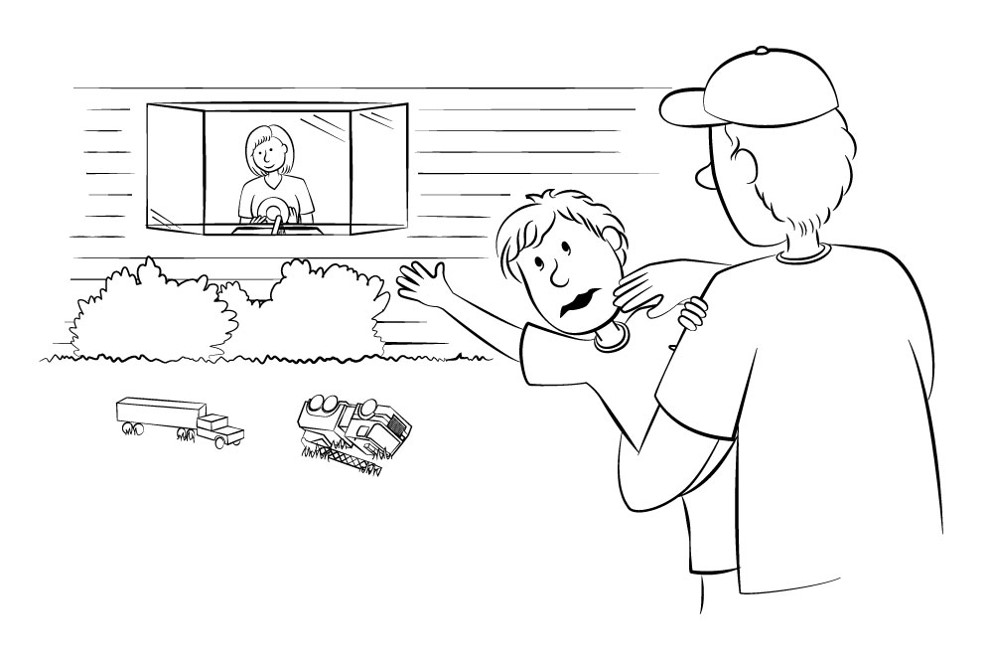As an energy management professional, you may have to give a presentation with slides to an audience. A lot may be riding on the quality of your presentation. Perhaps you have to prove return on investment for an upcoming purchase, share the results of an energy efficiency project, or enlist coworkers for an energy conservation initiative. 
Whatever your purpose is, chances are you haven’t been trained in creating great presentations. Unfortunately in most organizations, high-stakes presentations receive low-stakes preparations. But your idea is too valuable to fumble, so why not take some professional advice from presentation experts Nancy Duarte and Dan Roam.
Here are five tips for creating great presentations.
1. Limit each slide to one idea.
When creating slides, simplicity rules. In the HBR Guide to Persuasive Presentations, Nancy Duarte recommends limiting each slide to one idea, “There’s no reason to crowd several ideas onto one slide. Slides are free. Make as many as you need to give each idea its moment onstage.”
But simplifying information isn’t easy. We’ve all viewed presentations with slides that were cluttered and complex. This happens when the presenter places every detail she wants to say on the slide so she remembers to say it. Or when she dives into technical material too quickly instead of taking the audience along slowly. This type of information dump is common on slides, but decreases effectiveness of the slide—and obscures your big ideas:

2. Consider the audience point of view.
A good presenter always puts himself in the shoes of his audience. In Show and Tell, Dan Roam writes, “As presenters, our goal is simple: To help others see what we see.” But a common pitfall for presenters is to forget the audience point of view. Instead of speaking to where the audience is, the presenter ineffectively speaks to where the presenter is. He’s already bought into his idea, so he fails to make a clear and convincing argument for his viewpoint.
Sharing an idea that motivates action is more about communicating a process of understanding. A good presenter remembers when he hadn’t bought into the idea yet, so he addresses his audience that way, in order to bring them along the path that he already traveled. Remember, his job is to help them see what he sees. You can’t rush it.
3. Use diagrams when possible.
Diagrams can powerfully communicate concepts when words fall short.
“Diagrams are great tools for illustrating relationships,” says Duarte, “They clarify concepts so an audience can see at a glance how parts of a whole work together.” A picture really is worth a thousand words. So instead of listing the different parts of a system workflow in your next presentation, try using a diagram that illustrates the workflow process. Varying text slides with diagrams and other visual objects introduces variety as well, and helps to keep interest.
In order to utilize diagrams in your presentation, you don’t have to create your own. Diagrammer.com, by Duarte Design is a free website with more than 4,000 customizable diagrams for download. The diagrams are PowerPoint®-ready files that can be modified to include your text and with Diagrammer.com’s filtering tools, you can easily find the type of diagram you’re looking for.

4. Define your purpose and call to action.
From the start, your presentation should have a clear purpose and call to action. Begin your preparation with your main point/idea, how you wish your audience to change, and what you want your audience to do. Then shape the presentation around your purpose and call to action. Never lose track of where you want your audience to end up.
“This is the most critical step in planning your presentation,” says Duarte, “because that desired endpoint is the whole reason you’re presenting in the first place, and people won’t get there on their own.” Making your point won’t happen by chance, it has to be planned. So before you begin creating slides or choosing visuals or even crafting a story, make sure you’re clear on your goals and shape everything around them.
5. Tell a story.
In a presentation, it’s easier to tell facts than tell a story, but stories can accomplish more than facts can. “When we tell a story in a presentation, three great things happen,” says Dan Roam, “We make complex concepts clear, we make ideas unforgettable, and we include everyone.” Often it’s the stories that the audience remembers and retells to others.
If you can tell a story that finds its resolution in your idea, you can make a big impact. Recently I gave a presentation for the prayer breakfast at Cenergistic’s National Training Conference. My goal was to inspire the audience to find their best ways to pray, a concept from my book, which I called their voice in prayer. I told the story of a recurring nightmare I had as a child when I lost my voice and couldn’t cry out when kidnapped—and how wonderful it was to wake up and find I had my voice. The result was an incredible response from the audience.

So find your presentation voice. On your next high-stakes presentation, try these proven techniques and see your impact soar.
{{cta(‘cfa1051a-8a1d-4524-a471-0bd281879be7’)}}
 Best-in-class portfolio-level energy and utility bill data management and reporting.
Best-in-class portfolio-level energy and utility bill data management and reporting.
 Real-time energy and sustainability analytics for high-performance, net-zero buildings.
Real-time energy and sustainability analytics for high-performance, net-zero buildings.
 A holistic view of financial-grade scope 1, 2, and 3 carbon emissions data across your entire business.
A holistic view of financial-grade scope 1, 2, and 3 carbon emissions data across your entire business.
 Energy and sustainability benchmarking compliance software designed for utilities.
Energy and sustainability benchmarking compliance software designed for utilities.






